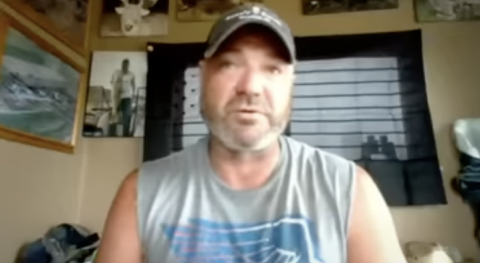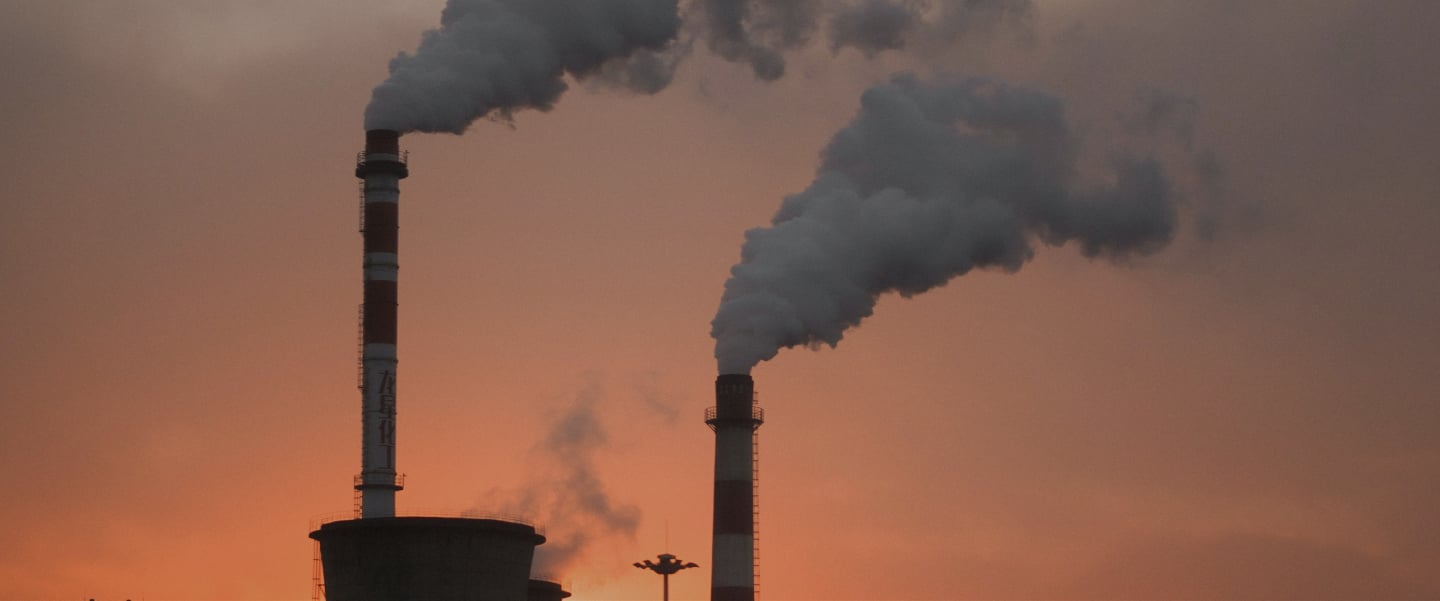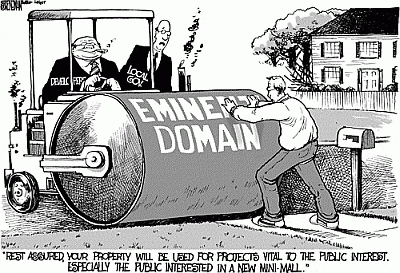
South Dakota Farmers Fight 'Carbon Capture' Land Grabs of Their Homes
The fight is not isolated to SD. Thanks to the political-climate-cult corporate push in numerous states, the property theft could come to your own backyard.
In October, last year, MRCTV reported on the courageous fight of Iowan residents to stop an ESG (Environmental-Social-Governance)-based attack on their property by Blackrock-affiliated corporation “Navigator CO2” and its “Heartland Greenway” “carbon capture pipeline.” At the time, that seemed like a lot of terminology to absorb, but, absorb the info those Iowans and we readers did, in order to understand the forces claiming “climate Armageddon” in their schemes to take more people’s liberty and property.
Now, another group of innocent Americans finds itself defending their private property from – yep – a government-corporate land-grab being conducted in neighboring South Dakota by acquisitive ESG figures who (SHOCK) have strong ties to Blackrock and even politics in the state of…Iowa.
In fact, some of the average folks standing up for their rights are facing LEGAL attacks and massive expenses brought on by the corporation, called Summit Carbon Solutions, and by the government in Brown County, SD.
Rebecca Terrell reports for The New American that Brown County farmer Jerad Bossly was out working the fields (which have been in his family for four generations) when Summit-hired surveyors engaged in what most of us likely would consider trespass. Yet, it has been Bossly and his wife whom the government portrays as the transgressors:
And Terrell provides a link to the early coverage of this issue from journalist Greg Price, which shows video footage from one of Bossly’s security cameras seeming to reveal one of the surveyors literally opening doors to enter buildings owned by the Bosslys.“He told The New American that when they arrived, he was about 12 miles away, working in a field. His wife was home, recovering from gallbladder surgery, and was taking a shower when the Summit surveyors knocked at her door. They entered the house, but finding no one there, they proceeded to an outbuilding where one of them walked in.”
Related: Imperial America: Biden Pushes Flint-Failed Obama EPA Chief Gina McCarthy As 'Climate Czar' | MRCTV
Price’s lengthy Substack report details how hard the Bossly family (the two Bossly children are 13 and 17 and work the farm, as well) endeavor to maintain their livelihood, and how much effort they put into things such as tree-planting in order to provide wind-breaks for their cattle. But these efforts – and the fundamental principle of private property – seem unimportant to Summit and Brown County.
Notes Terrell:
“Next, the Summit staff walked out onto the Bossly’s property and started setting up a tripod. By that time, Mrs. Bossly, with Jerad on the phone, confronted them and asked them to leave. Jerad said that the sheriff should be present if the company wanted access to his land. So the surveyors left.
His wife called Jerad back later that day to say a detective had just left the farm. Summit had reported Bossly for threatening to kill the surveyors. They also charged him with contempt of court for interfering with their survey activities.”
Stunning. And it gets worse.
Bossly faced off in county court with the company on Wednesday.
The scope of the problem is vast, targeting numerous innocent landowners in South Dakota in a fashion similar to the landowners who fought a similar “carbon-capture pipeline” scheme in Iowa.“The judge ruled in favor of the landowner, but he warned other farmers not to interfere with surveyors, threatening sanctions if they do. Another farmer who attended the hearing told The New American that the judge also refused to hear any evidence against Summit. That farmer complained that ‘they appear to get away with their lies.’”
Incredible, even with a new legal update from another hearing conducted Wednesday – information provided to Terrell by a landowner:“Bossly is one of more than 80 landowners in South Dakota facing eminent-domain lawsuits from Summit. In April, Fifth Circuit Judge Richard Sommers granted the company’s motion to conduct surveys of all land along their planned pipeline corridor — even private property. Taxpayers who originally declined to sign easement agreements are now forced to stand by as the company maps and drills on their land.”
The landowners are left having to fight the same way those Iowa farmers fought – in the courts – against a corporate-state combo that, curiously, also has a lot of ties to Iowa politics and to Blackrock.“The hearing was a ‘win’ but it wasn’t. The judge said right off the bat that he wasn’t going to hold Jerad in contempt for his threat. So, the judge seemed to accept that it actually happened without seeing any evidence. The judge passed the buck and refused to let our attorney, Brian Jorde, present any evidence. His reasoning was that it didn’t matter because he still was going to rule the same way regardless.
But it does matter. The judge refused to get to the heart of the issue: the fact that Summit lied about the threat and that they committed breaking and entering. Summit and its surveyors are the ones who should be charged with crimes, but they got off. A double standard in my opinion.
The judge also warned all us landowners in the room not to impede his order to allow the surveys to continue, or there will be sanctions. Why are the landowners getting lectured, and not Summit? The judge refuses to deal with the heart of the issue and passed the buck to the S.D. Supreme Court. Now we landowners are left with having to deal with Summit, which is allowed to break laws without being held to account.”
Related: EPA Pushes USPS To Spend BILLIONS On Fleet Of Electric Mail Trucks | MRCTV
For example, according to its own website, Summit CEO Jimmy Powell formerly was “Executive Vice President and Chief Operating Officer for Hiland Partners, a diversified midstream energy company that was acquired by Kinder Morgan” – and, as of February of this year, Blackrock announced that it just happens to own “164,259,459 shares of Kinder Morgan Inc - Class P.”
And in what form does the shadow of Iowan politics loom? In the form of Summit “Senior Policy Advisor” Terry Branstad, who “was elected as Iowa’s Lieutenant Governor in 1978. In 1983, he was elected Governor of Iowa, a position he would hold for a total of six terms covering over 22 years, making him the longest-tenured governor in American history.”
The corporate-political forces arrayed against the farmers in SD, as well as those attacking the Iowans fighting the “Heartland Greenway” “carbon-capture pipeline” are well-exposed in an excellent investigative piece by former Congressman Steve King, for YourNews:
And all of it is predicated on flimsy claims of “anthropogenic climate” catastrophe, which I question here, here, and here.“Larry Fink’s BlackRock provides the investment capital driving the 1300 mile Heartland Greenway CO2 Carbon Capture Use and Sequestration (CCUS) Project.
Bruce Rastetter, CEO of Summit Carbon Solutions, is the other major player in the race for hundreds of billions of We the People’s tax dollars. His proposal is to build 2000 miles of high pressure CO2 pipeline. Summit would then pump its CO2 into deep wells near the oil fields by Bismarck, North Dakota. BlackRock’s destination for the liquid CO2 would be deep wells near the oil fields south of Springfield, IL.
Summit proposes to collect 12 million metric tons of CO2 from 32 ethanol plants in five states. BlackRock would collect 15 million metric tons from 21 ethanol plants Home. A third and shorter pipeline system is proposed by Wolf, a Canadian company. The Wolf proposal is for 280 miles of high pressure CO2 pipeline collecting 12.6 million metric tons of CO2. Their destination for deposit would be near that of BlackRock’s.”
Make no mistake about it. The battle lines aren’t just being drawn, they are being drawn on OUR property and OUR peaceful market interactions. The South Dakota fight and the Iowa battles are just the start.
We cannot be blind to what these international-political-corporate forces are attempting to do, which is to destroy private property, to use the already immoral weapon of “eminent domain” in a manner that follows the vile “Kelo v New London” Supreme Court decision in order to take private land to hand it to corporate interests, and to claim that those who oppose the government thievery are the bad guys.
We know that the truth runs completely contrary to their political canards.


 Oakley Shelton-Thomas
Oakley Shelton-Thomas


